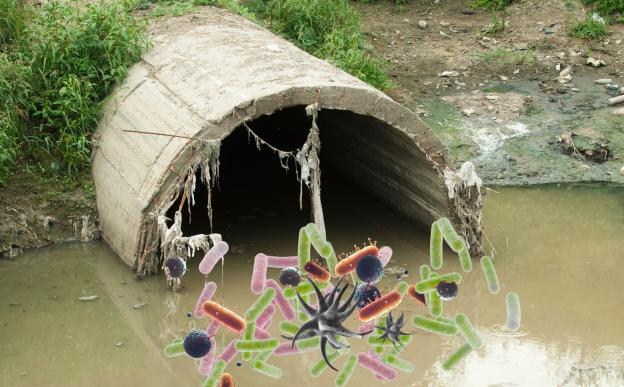
Image: Savitha Sekhar, Research Matters
Antibiotics are very effective in killing bacteria, only as long as the bacteria do not become resistant to the medicine. Antibiotics are widely used to treat bacterial infections in humans and animals. They are even used in household items such as floor cleaners and soaps. Antibiotics enter the environment from these sources and contaminate our food and water, giving a chance to the bacteria to become resistant to the medicines, which could earlier kill them. It means that the drugs we could use to treat a particular disease may no longer be effective.
We need to monitor the level of antibiotics in our milk and meat or the water around us to ensure that it is minimal. A group of scientists, led by Prof. Soumyo Mukherji, in the Indian Institute of Technology Bombay (IIT Bombay) and Manipal Institute of Technology, Manipal, have developed a sensor to find out whether a sample contains certain kinds of antibiotics, identified as β-lactam antibiotics. They published a study about this in the journal Analytical Chemistry.
There are different methods to check if a sample contains an antibiotic, but they cannot determine the level of the said antibiotic. Other methods such as Mass Spectroscopy or standardized chromatography can measure the levels of antibiotics but are expensive and require experts to handle them. In contrast, the sensor developed by Prof Mukherji and team is easy to use, affordable, robust and reliable. It can be used to check the presence of β-lactam antibiotics in a wide variety of samples, including water, milk and meat and does not require an expert to use it.
Penicillin and similar antibiotics like cephalosporin are called β-lactam antibiotics. They derive their name from the presence of a ring containing nitrogen in their molecular structure. The antibiotics can kill a wide variety of microorganisms, making them a popular drug of choice not only for the treatment of minor infection but also as an ingredient in various household products such as floor cleaners and soaps and food products such as milk and poultry. The β-lactam ring works by targeting the cell wall of the bacteria, thereby destroying the bacteria. The microorganisms resistant to the antibiotics evade destruction by secreting an enzyme called β-lactamase that breaks the β-lactam ring, thus rendering the antibiotic useless.
The sensor has a U shaped bend smaller than that of a U-pin, of optical fibre coated with polyaniline that can be dipped in the sample to be tested. The sensor is ready to be used after coating the polyaniline with a layer of the enzyme β-lactamase. When β-lactam in the test sample gets broken down by the β-lactamase enzyme, hydrogen ions are released, and acid byproducts form. This alters the polymeric backbone of polyaniline- changing its form from emeraldine base to emeraldine salt. This is seen as an increase in absorbance at 435 nm and the amount of light absorbed is proportional to the concentration of antibiotic in the test sample making the solution more acidic. The light is absorbed by the polyaniline coat on the fibre that is sensitive to pH. The amount of light absorbed is proportional to the concentration of the antibiotic in the test sample.
The researchers used their sensor to measure the concentration of antibiotics in milk, meat, and wastewater samples that contained a known amount of the antibiotic. The researchers found that the sensor was most sensitive when the sample was slightly acidic (pH 5.5); hence, they used the same acidity level for other samples. The minimum concentration of antibiotics that the sensor could detect for wastewater was twice that of milk.
The scientists found the sensor is considerably less sensitive to antibiotics in meat as compared to milk. However, given that there are hardly any sensors to detect antibiotics in meat, this is a significant advantage. Since most food safety administrators ban the use of β-lactam antibiotics in poultry, this is particularly useful.
The sensor development was not free from challenges. Calibrating the sensor for use and making it sensitive to detect the lowest possible antibiotic concentration across different samples was one of the biggest challenges, says Dr Pooja.
The scientists also checked if the sensor was specific to β-lactam antibiotics. They observed that when the sensor was used in a solution containing other antibiotics, it did not detect the antibiotics.
When not coated with the enzyme, the sensors can be stored for a long time. However, once the enzyme is coated, the sensor must be kept at 4℃. When manufactured on a large scale, the sensor could cost less than ₹30-35. It is much cheaper as compared to more than ₹3000 needed for the conventional techniques in use today. Moreover, each sensor can be used twice, which further reduces the testing cost. The researchers have applied for a patent for the sensor and are awaiting approval.
This article has been run past the researchers, whose work is covered, to ensure accuracy.
























